We tested the Trek Rail+: power and agility without weak points
The Trek Rail is one of those eBikes that guarantee success. It has everything that most bikers are looking for. Full power Bosch motor, 160mm of travel, modern and adjustable geometry, mullet configuration, full carbon construction, and maximum autonomy. In its 5th generation, the Trek Rail reaches levels of capacity and refinement never seen before. We have been able to thoroughly test its most exclusive version and it has left us with great sensations.
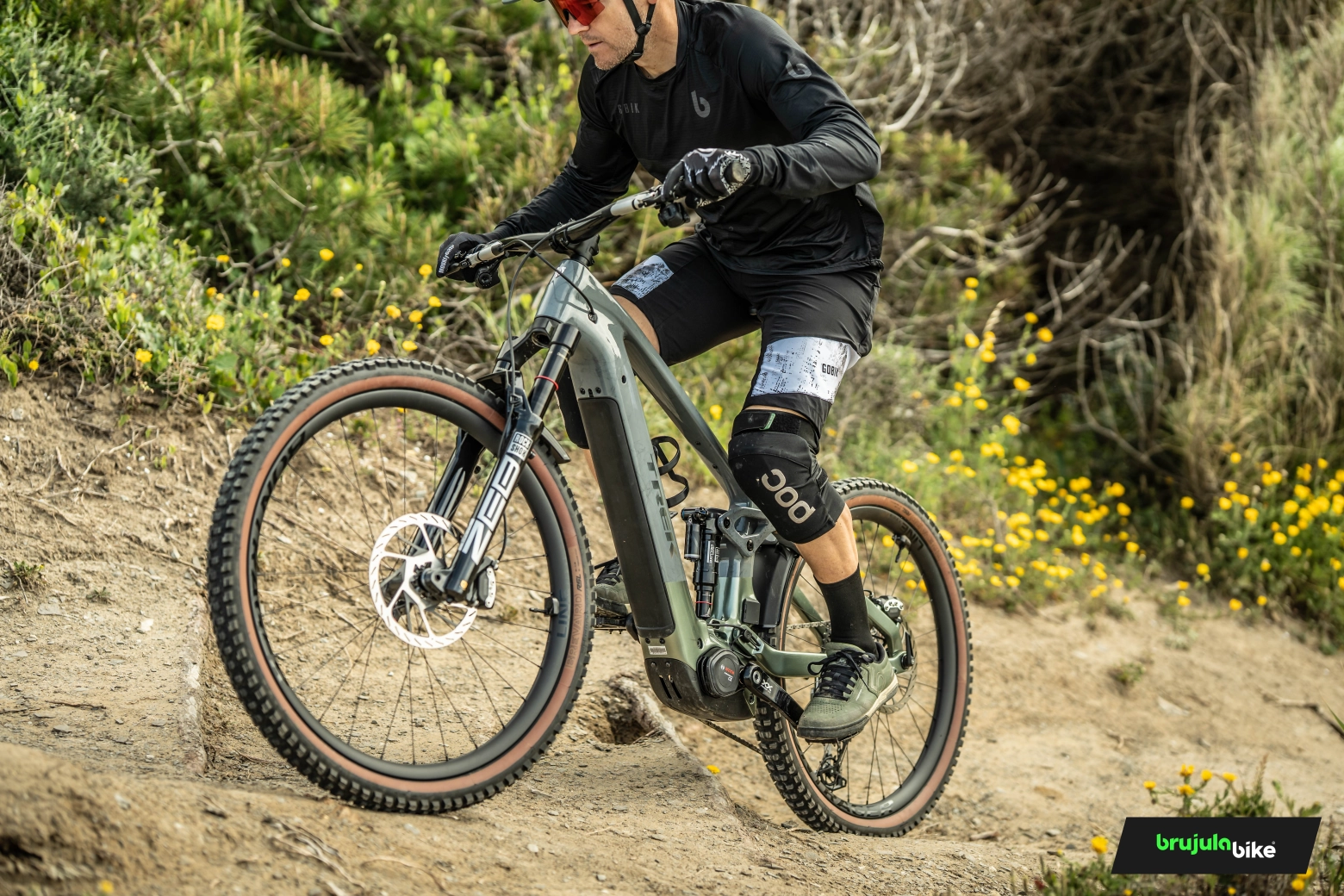
New Trek Rail: small tweaks to take it to the next level
The Trek Rail now has five generations of evolution. Instead of making radical changes with each renewal, Trek opts for continuous improvement, refining its strengths to perfect the bike's behavior with each new version.
In this fifth generation, they have added the Mullet configuration, with a combination of a 29" wheel in the front and a 27.5" wheel in the back (except for size S where both are 27.5"). They have also increased the rear travel to 160mm and matched it with the front suspension. A new RIB 2.0 battery mounting system is introduced, along with adjustable geometry, and of course, it is equipped with the latest version of the Bosch Performance Line CX Gen5 motor.
RECOMENDADO
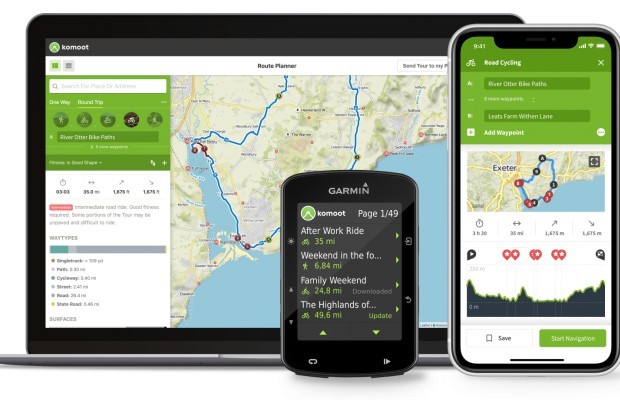
The best apps for cycling and mountain biking
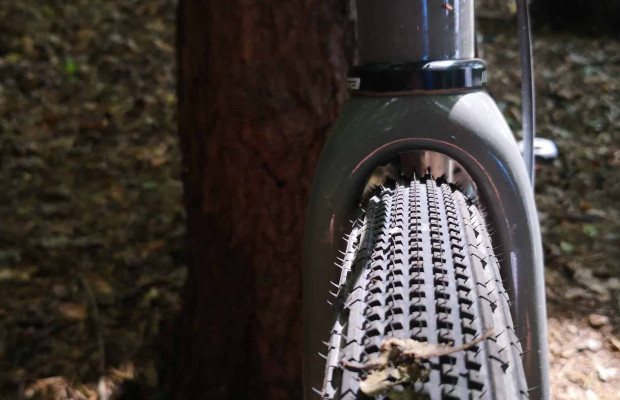
Why wider tires in gravel are faster

Black Friday 2025 cycling bargains: save on Garmin, POC, Maxxis and more
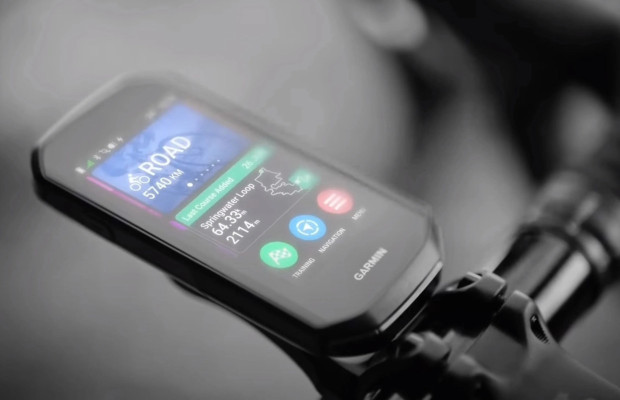
Black Friday Garmin 2025: the ultimate guide to choosing your GPS at the best price
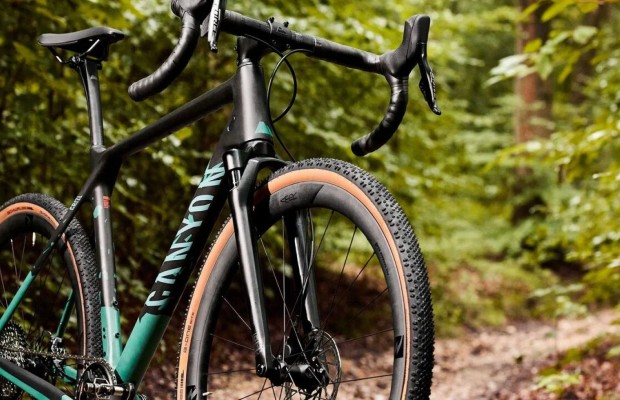
Do you need suspension on your gravel bike?

Countersteering, braking and cornering: the basics to improve your cornering skills
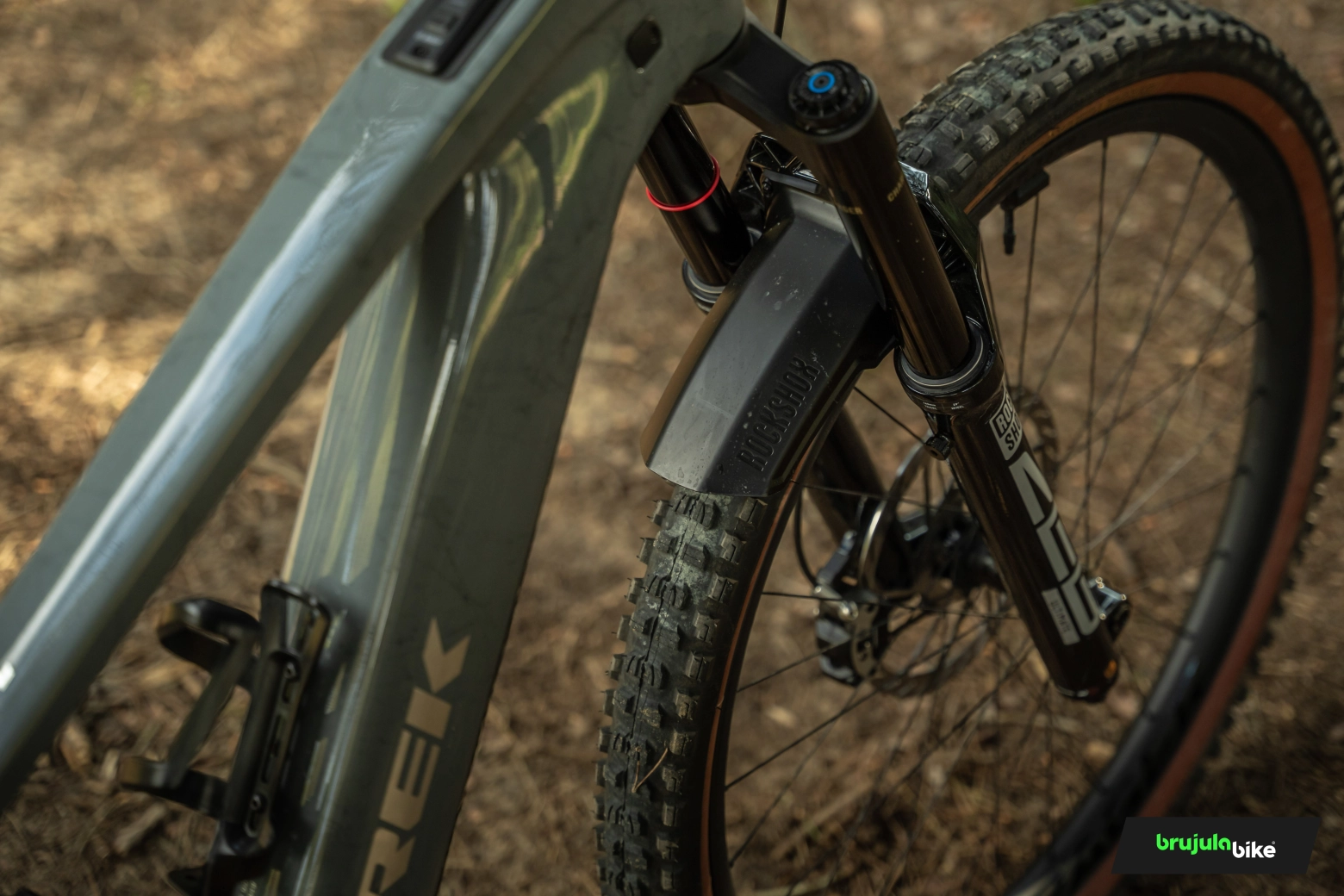
The new frame of the Trek Rail has quite harmonious shapes, although being an eBike with a large battery capacity, it has to resort to a generous diagonal tube. The new battery extraction method stands out, now from the bottom of the tube, thanks to the new RIB 2.0 mounting system that offers, according to the brand, greater security and eliminates any vibration.

In the suspension system, there are no major visual differences, although they have adjusted the progressivity curve, seeking a somewhat more linear behavior and increasing the anti-squat, aiming for better pedaling efficiency. However, they have included a chip in the lower shock mount to allow us to choose a slightly more progressive curve, either to mount a coil shock or to reduce the possibility of hitting hard landings.
It still features a concentric articulation to the rear axle, which guarantees good suspension behavior during braking.
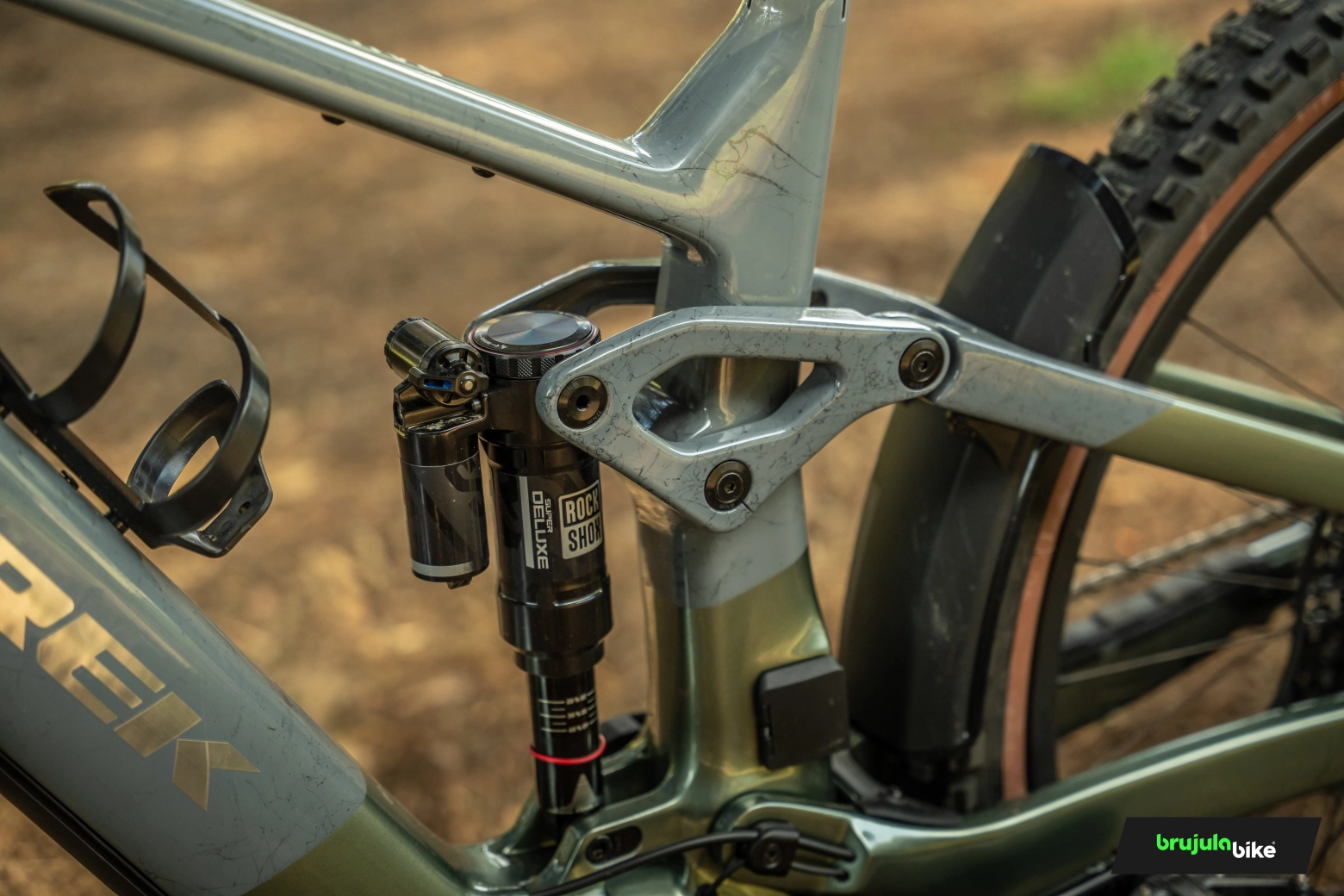
Regarding the frame lines, we see quite oversized tubes in general, highlighting a very robust rear triangle, with large vertical sections and square-shaped seatstays. In this area, we also see the brake caliper mount sized for 200mm discs without the need for an adapter.

In the vertical tube, whose dimensions have also increased drastically, they have increased the maximum insertion of the seatpost, so that seatposts with 170mm of travel can be mounted in all sizes except S. They do not use internal cable routing through the headtube, which simplifies maintenance and also makes sense when optional headset cups are offered to adjust the geometry.
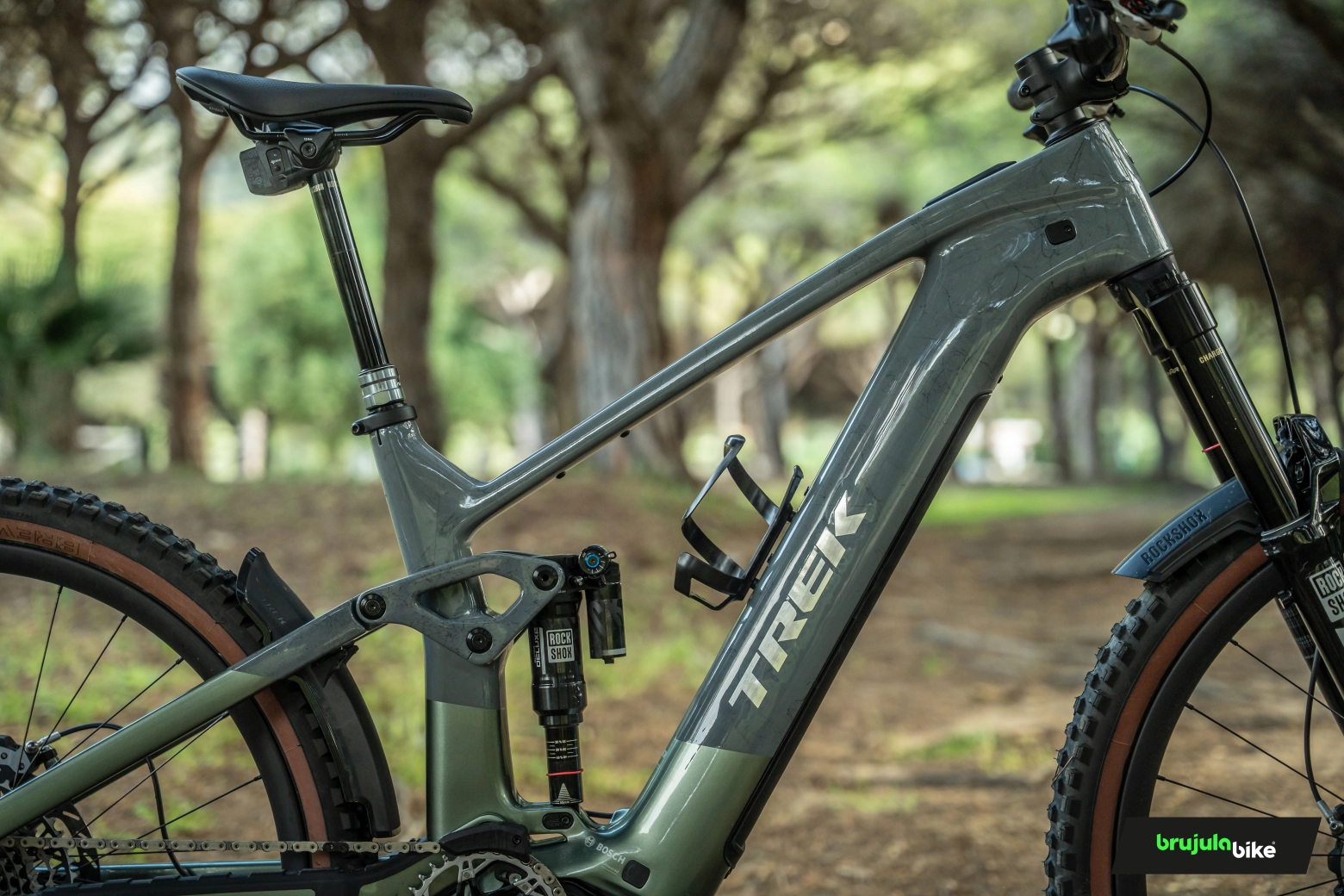
As for the mentioned geometry, we have different customization options, which we will discuss later, but as the bike comes configured from the factory, it presents these numbers:
The head angle is 64.5° in all sizes. The seat angle varies slightly, being 77.2° in size M. The reach in size M is 450mm, the bottom bracket height is 338mm, the chainstay length is 448mm, and the wheelbase is 1230mm in size M.
These are quite current figures, and we also have the possibility of acquiring eccentric headset cups with which we can modify the head angle by +-1°. And also, in the attachment of the seatstays with the upper link, there is another chip that allows us to raise the bottom bracket to 345mm while changing the head angle to 65°.

Although there is a detail that caught our attention, and it has more to do with the sizing than with the geometry, and that is a very large jump between size M and L, with a 40mm difference in reach between the two sizes, while the other changes are 20 and 25mm. This may make some users feel caught in the middle and not find their ideal size.

Bosch Performance Line CX, the fifth generation of the most desired motor
The Trek Rail mounts the latest evolution of what is possibly the most famous motor in the eBike universe. This latest version still offers a maximum torque of 85Nm, but the quality leap comes from better sensors and firmware that achieve a more natural pedaling sensation and less noise, mainly in terms of vibrations.
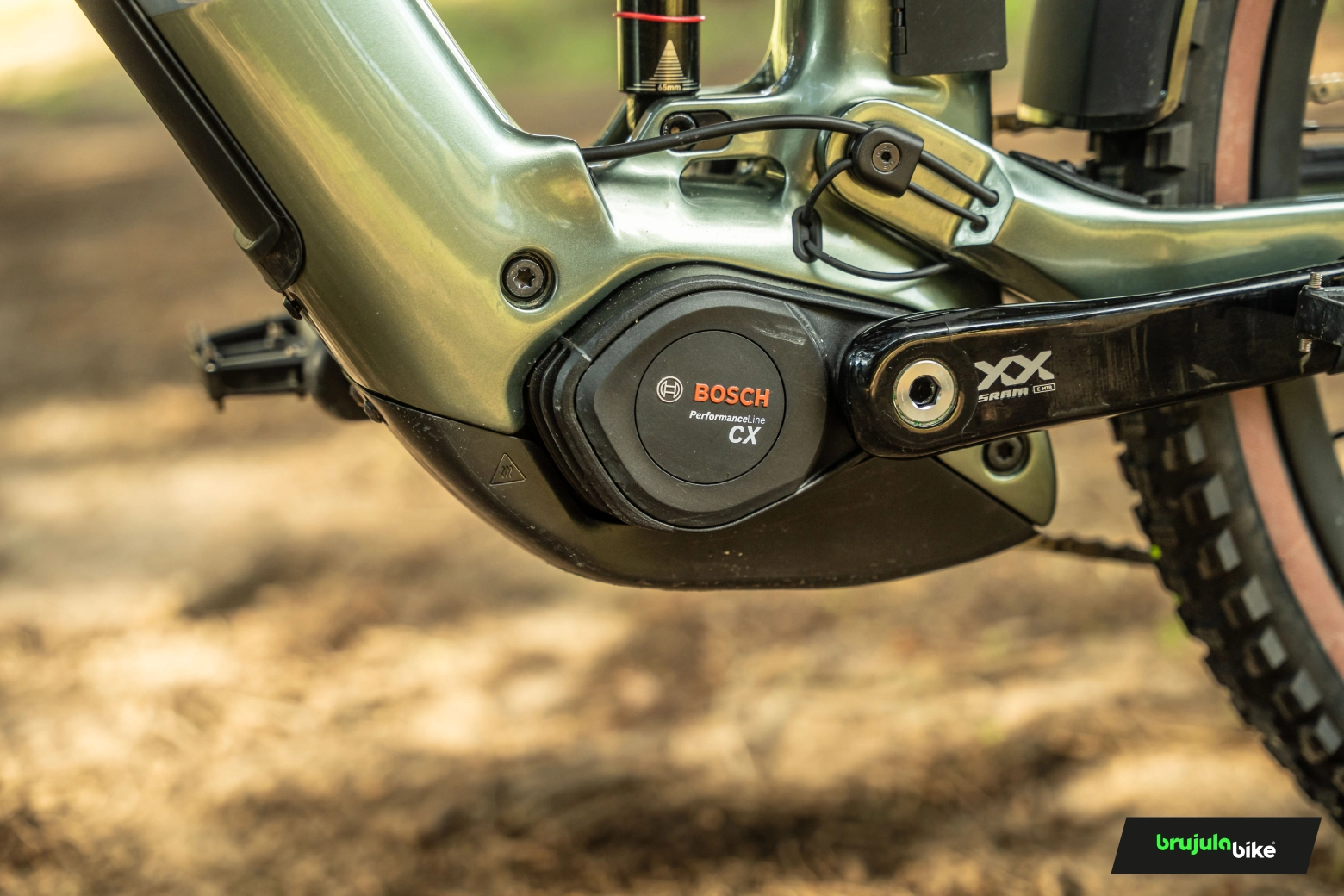
The battery mounted on the Rail is the new 800Wh Powertube which, thanks to its optimization, manages to be lighter than its 750Wh predecessor. If we want to further extend the autonomy, we have the option of purchasing a Bosch PowerMore extender, which can provide an extra 250Wh.
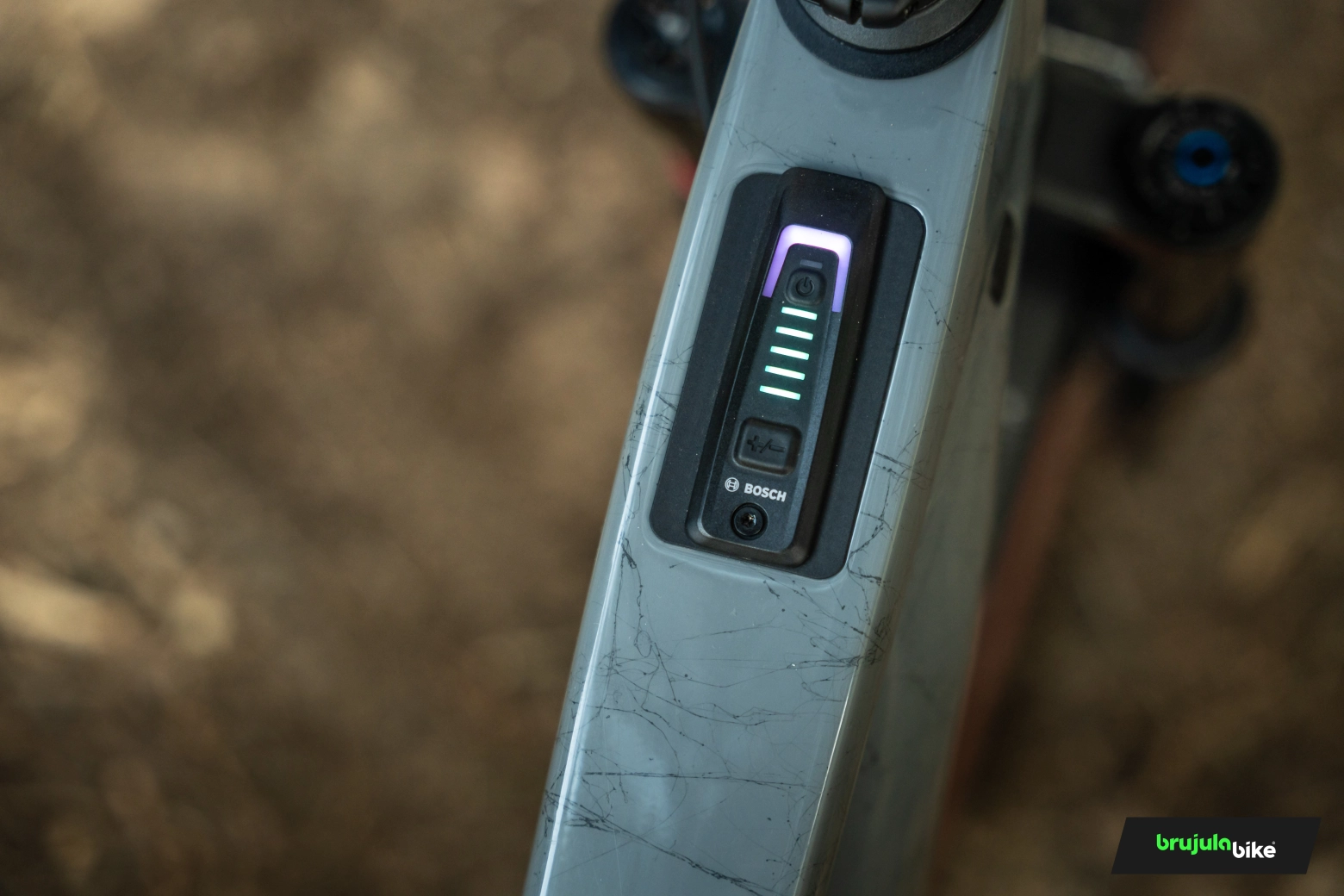
The Trek Rail comes equipped with the Bosch BRC3100 display on the top tube, which works based on LED lights and offers us the most important information while riding, but the frame is prepared to accommodate the foreseeable evolution that Bosch may present in the future, for which there is a larger reserved space.
We also have the Bosch Mini Remote wireless controller, which allows us to change assistance modes or activate Walk Assist in the most comfortable way.
Trek Rail+ 9.9 XX AXS T-Type Gen 5: maximum level in every detail
The bike we have had for our tests has been none other than the top exponent of the Trek Rail+ range.
Its assembly includes the most exclusive components we can find in the Sram / RockShox ecosystem for eBikes, including even TyreWiz pressure sensor valves.
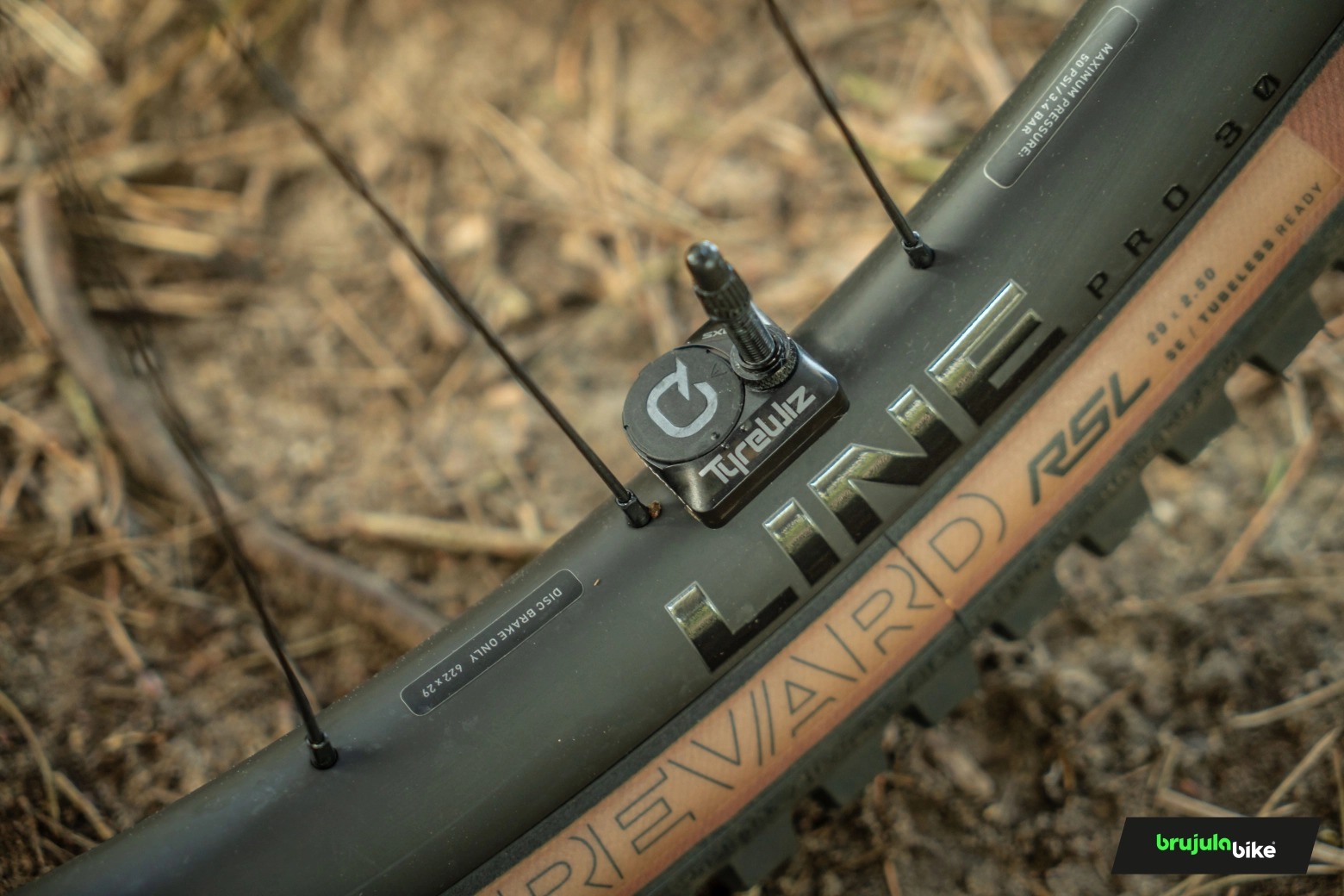
The group it mounts is the Sram XX AXS T-Type in its entirety, including its specific eBike cranks with a length of 165mm. It also opts for the new Rocker version of the Pod Controller remote. And it mounts it on both sides of the handlebar, as it also has a RockShox Reverb AXS wireless seatpost, offering 170mm of travel.
For braking, it also uses the best that Sram offers with their Maven Ultimate brakes with 200 and 220mm discs.
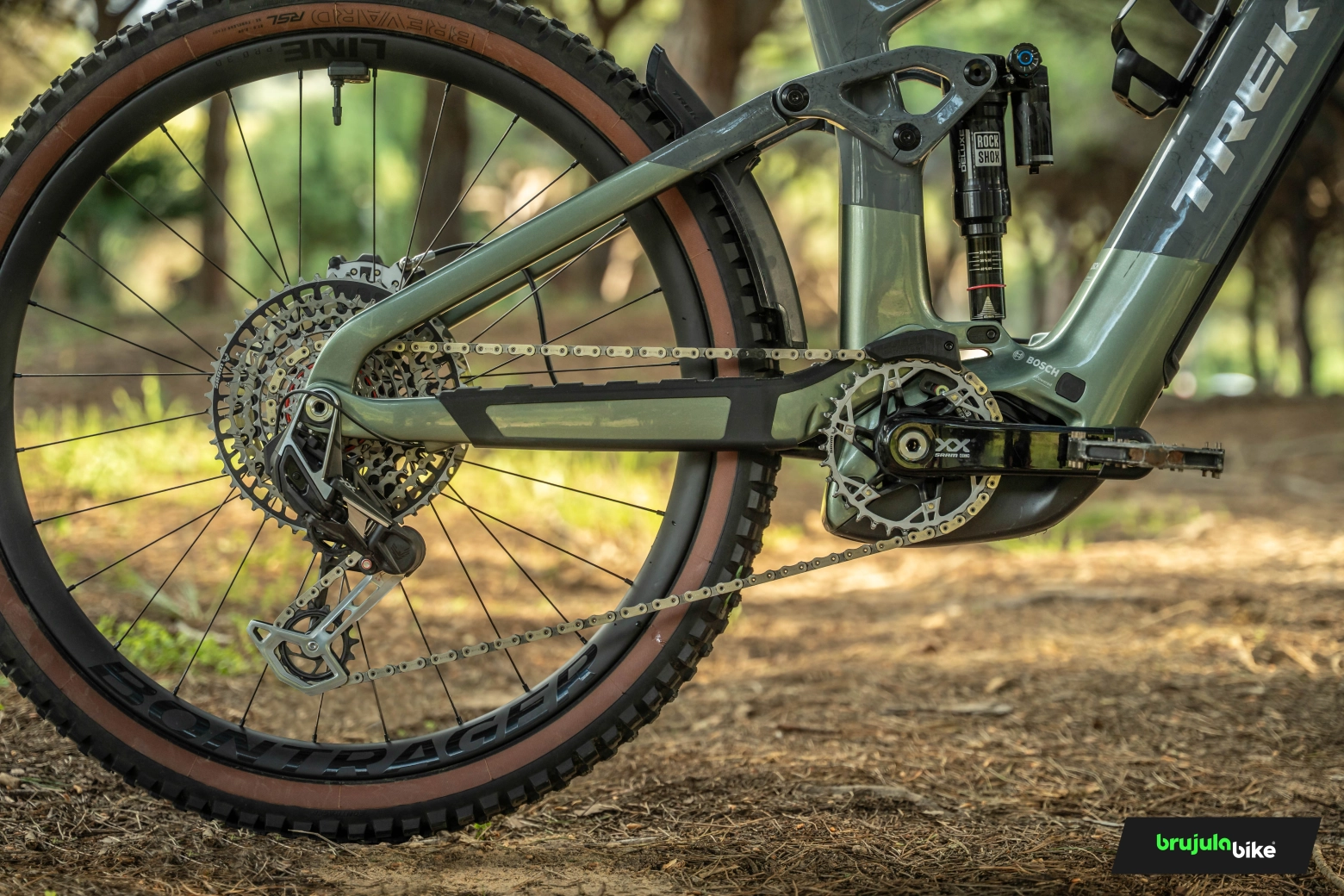
In the suspensions, as we mentioned, it also mounts the best of Rock Shox, with an Ultimate ZEB fork with Charger 3.1 cartridge, offering 160mm of travel and high and low-speed compression adjustments.
The shock is the Super Deluxe Ultimate, which also offers multiple adjustments and has a lever to minimize oscillations during climbs.
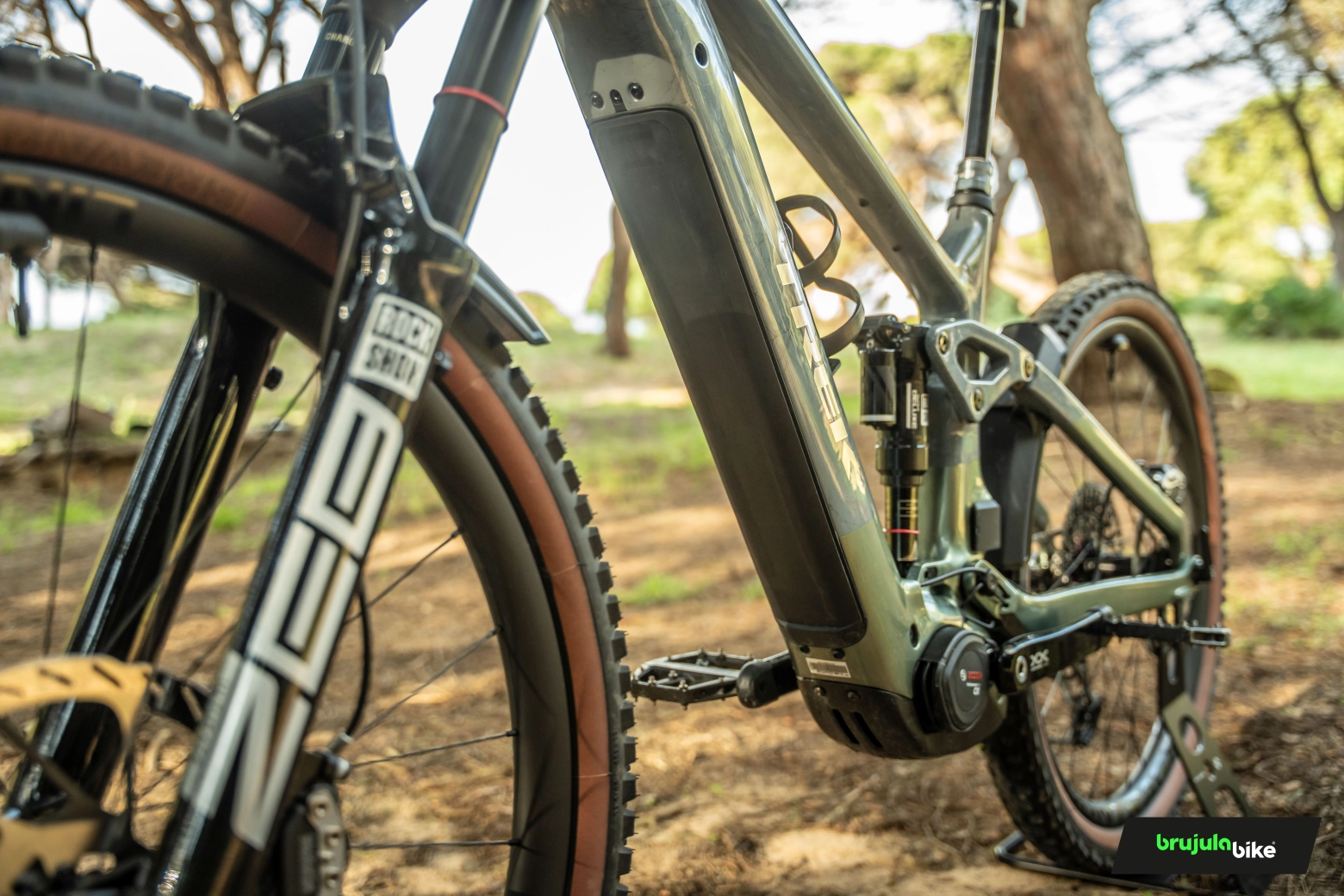
The components are top of the line, highlighting Bontrager Line Pro 30 wheels with carbon rims and hubs with Straight Pull spoke attachments. The tires are also Bontrager, with the same tread on both wheels, being the Brevard RSL SE model in 2.5" width, although of different diameters as we have a 29" front and a 27.5" rear.
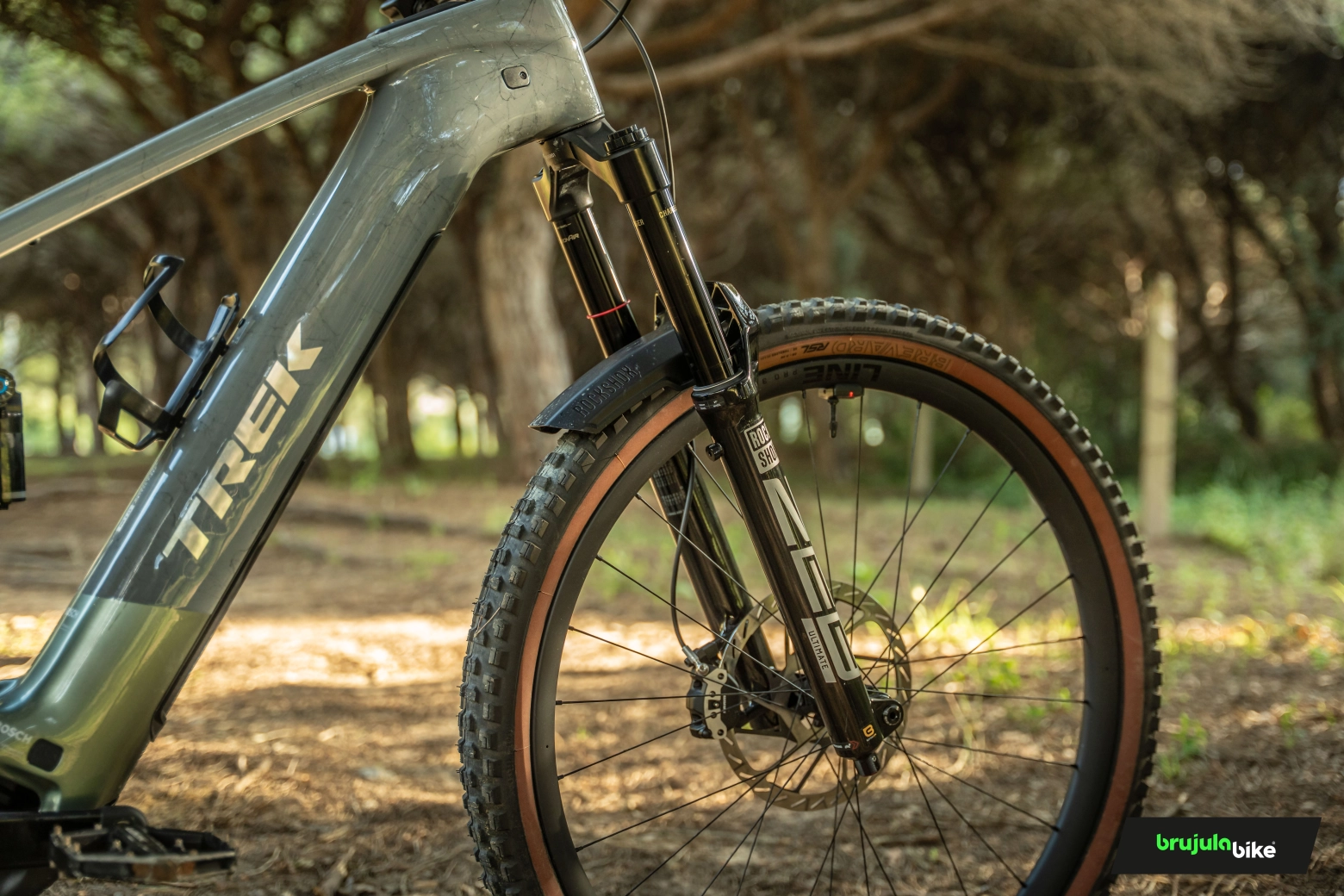
In the rest of the components, the Bontrager Line Pro carbon handlebar stands out with a width of 780mm and particular shapes, as it has sections that are not completely round. It is mounted on the aluminum Line Pro stem with a length of 45mm. The Trek Verse Comp saddle has convinced us with its shape and comfort, although a saddle with steel rails does not seem the most suitable on a bike that costs almost 13,000€.
On the road with the Trek Rail+
Our first impression with the Trek Rail 9.9 live was that of being in front of a bike that is very aesthetically successful and with a high level of quality finishes. It is true that such a voluminous diagonal tube may not appeal to everyone, but it is the price to pay to accommodate an 800 Wh battery that, moreover, does not occupy the entire length of the tube, leaving the upper part empty, thus improving the location of the center of gravity. It is a full-power eBike that does not try to hide its condition.

The battery is still removable, but now it comes out from the bottom of the tube, in a very simple way, just by turning a screw a quarter turn with an allen key and then pressing a button on the top of the battery to release it. In addition to being a very simple and practical system, the bike gains a lot aesthetically by not having the cover on the side of the main tube.
We weighed it before putting on the pedals and it marked 24.12kg. An intermediate figure in this type of bikes, but considering the robustness of its construction, its motor, autonomy, and its assembly designed for the toughest treatment, we think it is a good weight.
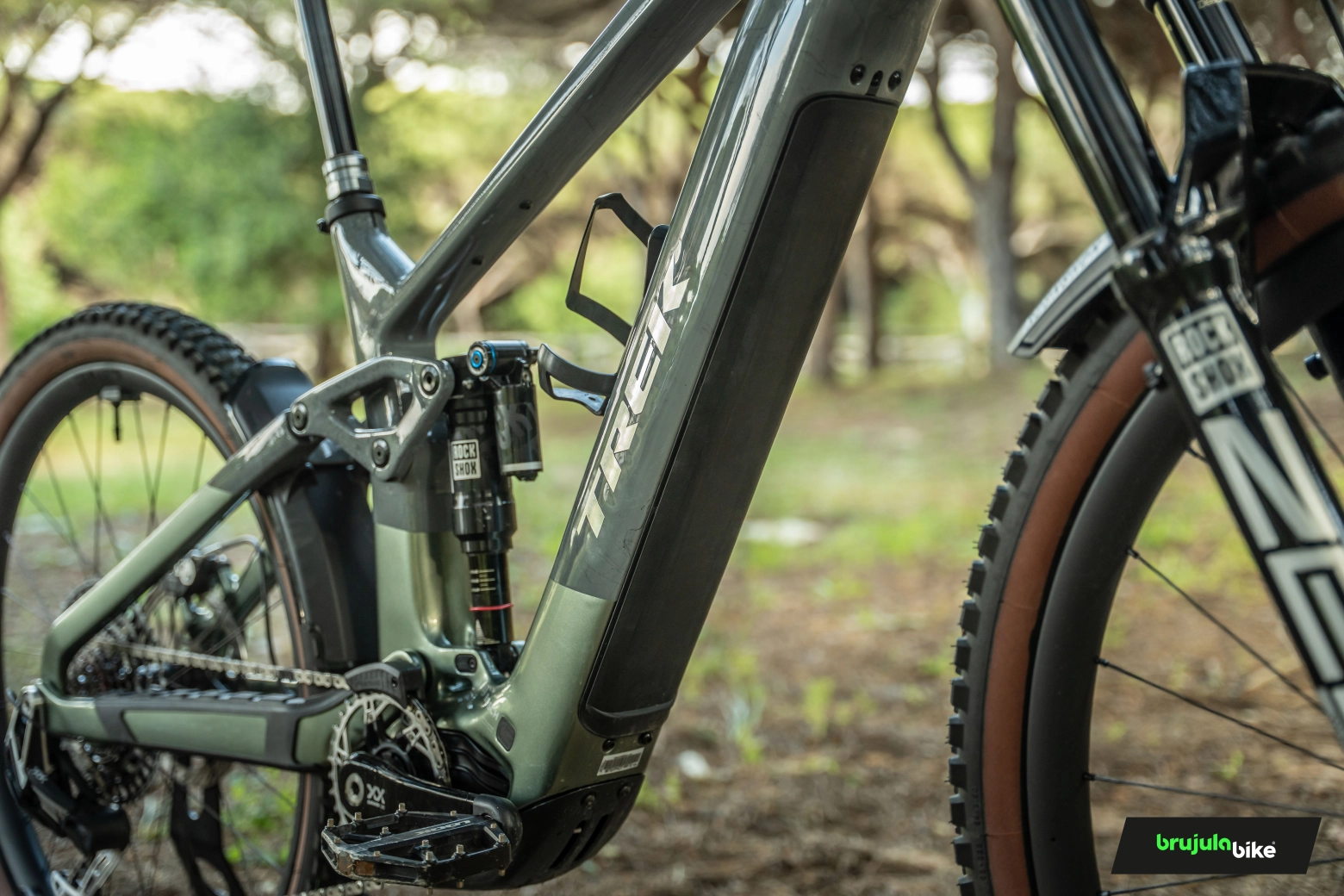
We made the suspension adjustments, and we must mention that the adjustment dials, both on the fork and the shock, seem unbeatable to us. They are clear and also allow you to visually see the level of each one. Once these adjustments and position adjustments were made, we started our tests.
We encountered a small handicap, and that is that our test bike was a size L and, as we mentioned, it is a rather generous L in length, so it was not our ideal size, although as we will see, it did not limit us too much.
During the first kilometers, we familiarized ourselves with the assistance modes and their possible modifications.
Through the Bosch Flow app, we can choose which modes we want to have available on the bike, as there are up to 7 different modes, each with its particularities (this would be for another article) and we have to choose 4. The truth is that for this type of bike, the four that come pre-configured seem to us to be the most appropriate, which are ECO, TOUR+, eMTB, and TURBO. But they are also customizable through the app.

Once customized to our liking, we mainly used TOUR+ and eMTB, which are both dynamic modes and assist us more when we exert more force, giving us a very natural pedaling sensation.
In this new generation of the Bosch Performance Line CX motor, we appreciate a slight decrease in noise during assistance, and although it is still clearly perceptible, especially at high assistance levels, it is not annoying.
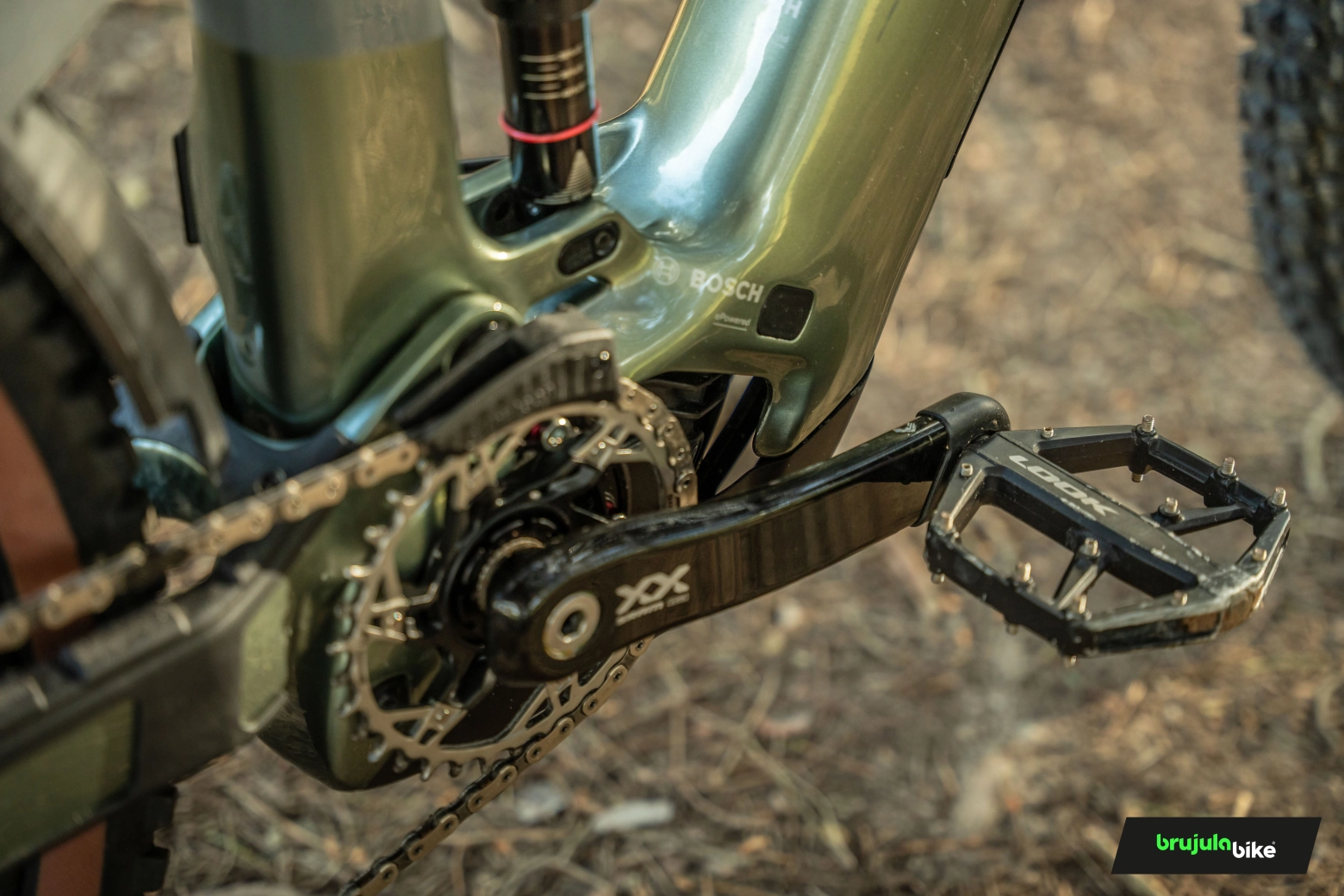
We ventured into more technical and challenging terrain and we were able to test the capacity of the new generation of the Bosch Performance Line CX, which has sought an improvement in control and sensitivity in the traction of the rear wheel. The improvement is palpable, and we climbed winding and difficult sections with some comfort without fear of the bike losing control.
We must also mention the good performance of the suspension during pedaling, which, although not as critical on an eBike, always helps, and on the Rail, the anti-squat has been increased and the Sag level is around 100%.
One of the most notable differences we noticed in this type of climbs is the lower wear it causes us, not due to pedaling itself, but because the demand in terms of concentration and activation of each muscle is less demanding than before to overcome the most difficult stretches.
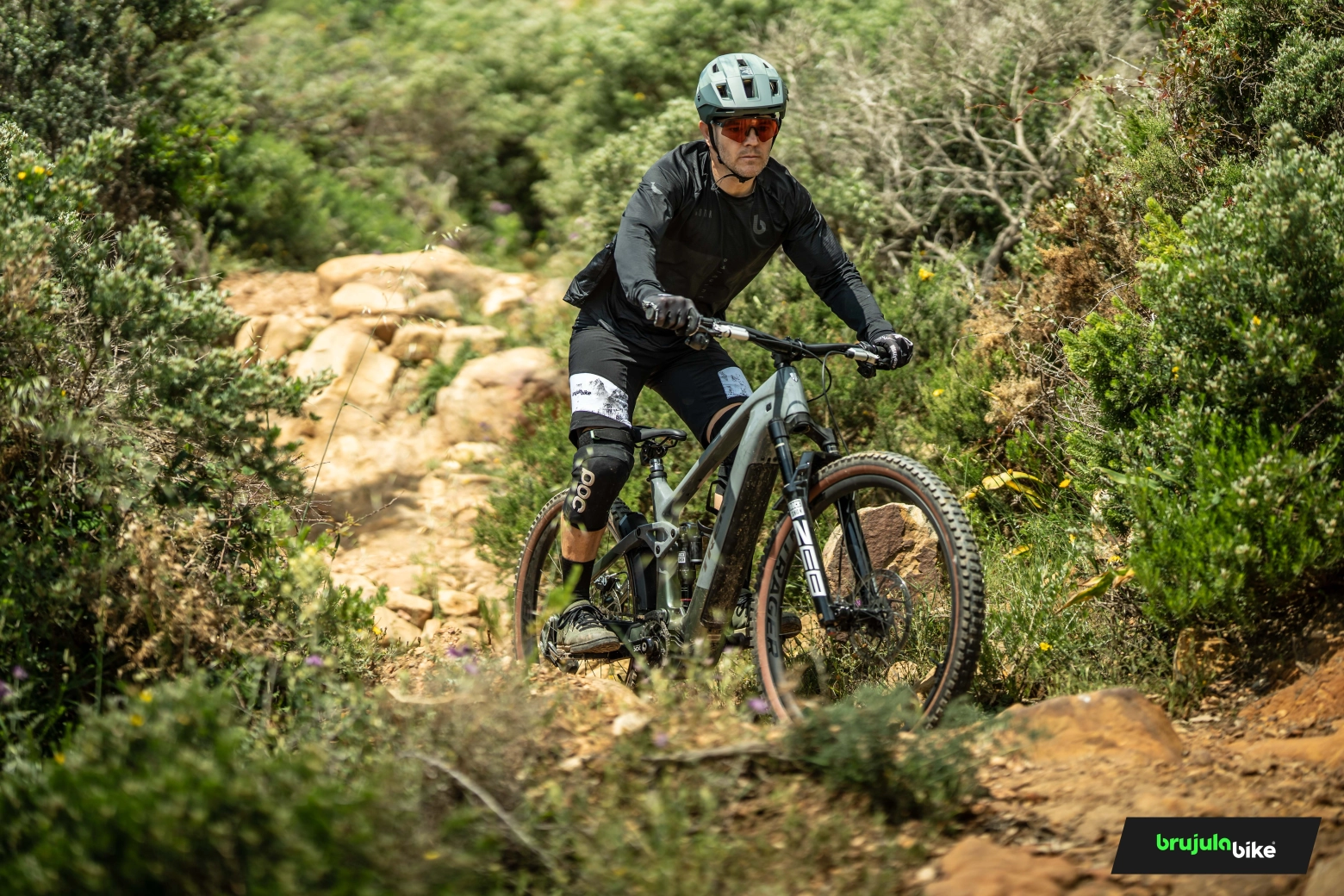
When for some reason you have to put your foot down on the steepest slopes and use the Walk Assist, we found its effectiveness, and in particular the Hill Hold function seems very useful, as it prevents the bike from moving backwards for a few seconds when the button is released. But there is a detail that we liked less, and is that to start assisting you have to press the - button on the remote control and start moving the bike, and in the most difficult situations is precisely the first movement of the bike, the most complicated to perform.
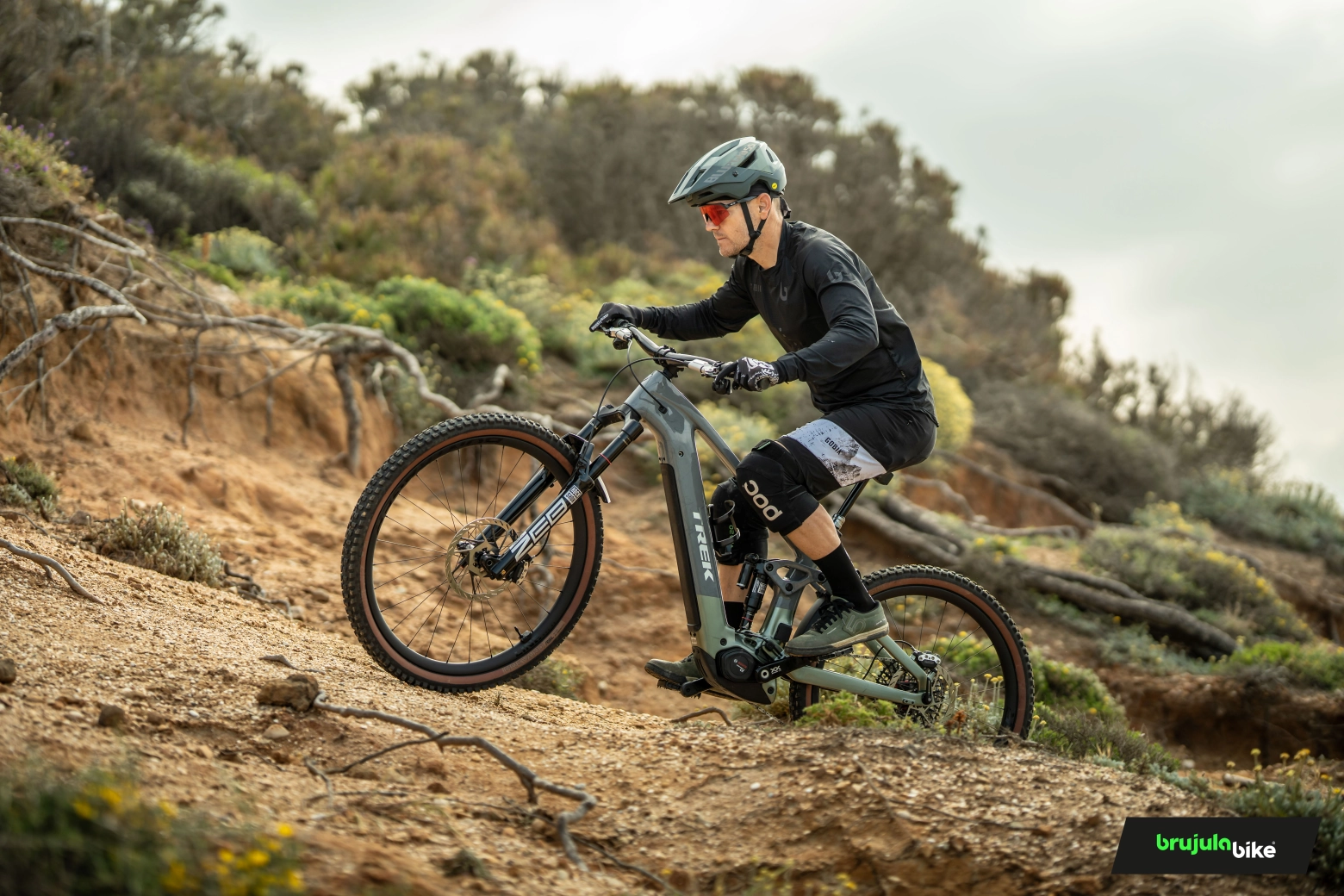
Devouring trails with the Trek Rail
We have reached a point in the improvement of the Bikes where the climbs are almost as enjoyable as the descents, but let's not fool ourselves, the user who buys a bike like this will surely have in mind the descents, and the more the better.
The first trails we faced with the Rail were easy to adapt to the handling of the bike. We found that it was not difficult to get it into each curve, despite its length for being a size L.

We expected a good behavior of its suspensions, since the fact of mounting the best of Rock Shox is a guarantee of performance. But in particular the rear suspension boasts outstanding sensitivity and smoothness.
Once everything was adjusted according to our weight and preferences, we could see how the rear has a very linear behavior, absorbing very smoothly light and moderate impacts, and using a generous part of travel, but increasing the progressivity in the final part, because when we had to face more aggressive descents and some strong receptions we did not reach the top.
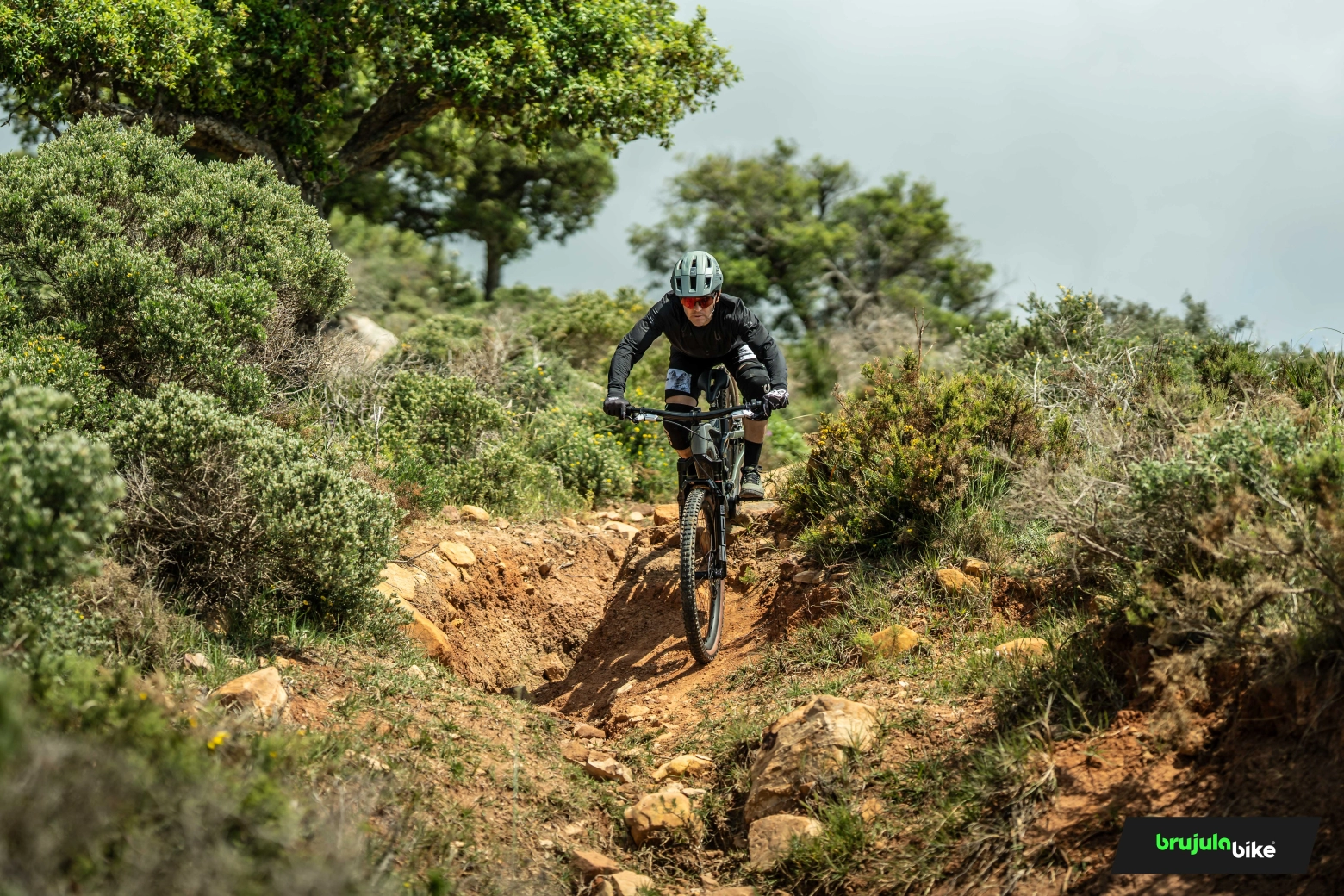
Anyway, as we have mentioned, in the shock absorber anchor we find a chip to increase the progressivity, either because we opt for a spring shock or by our own preferences.
In aggressive descents, the behavior of the bike is excellent and gives us a lot of security. There is no loss of suspension sensitivity during braking, and on steep, broken slopes we benefit from the Rail's mullet configuration and the mounting of a long-travel seatpost. Incidentally, on these types of very steep and broken descents we noticed very clearly the noise reduction of the Bosch motor in this new generation.
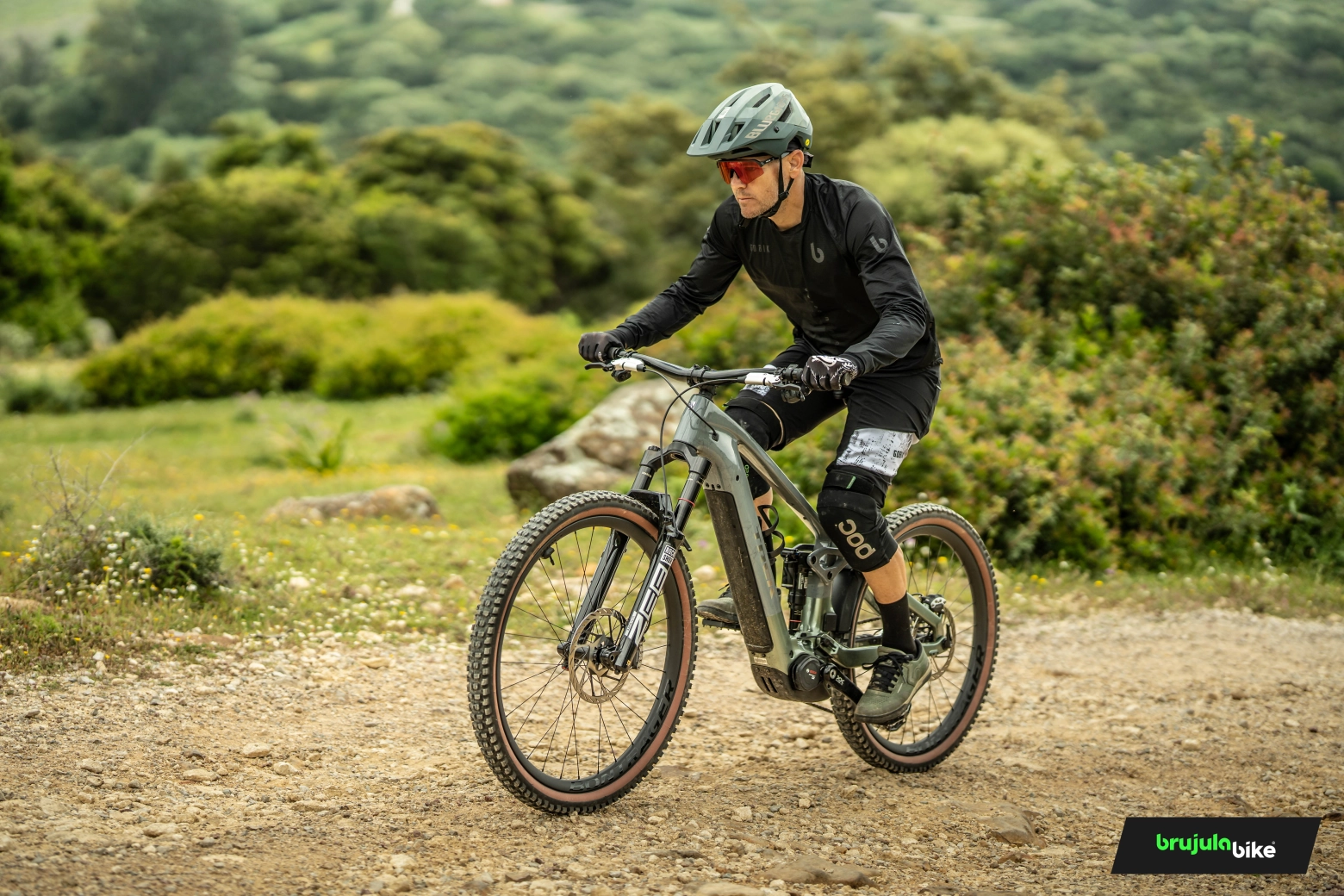
Despite being an eBike of a certain weight and also despite being one size larger than we would have chosen, we had no problems getting the bike into very twisty trails with twisty turns, which speaks very well of a geometry that retains the necessary agility to not turn the Rail into a slow bike reactions.
As for the setup of our test unit, we can't find the slightest fault with Sram's best drivetrain for this type of bike, with outstanding precision and accuracy. We really liked the Pod shifter with the Rocker housing, which we found smoother and easier to use than the buttons.
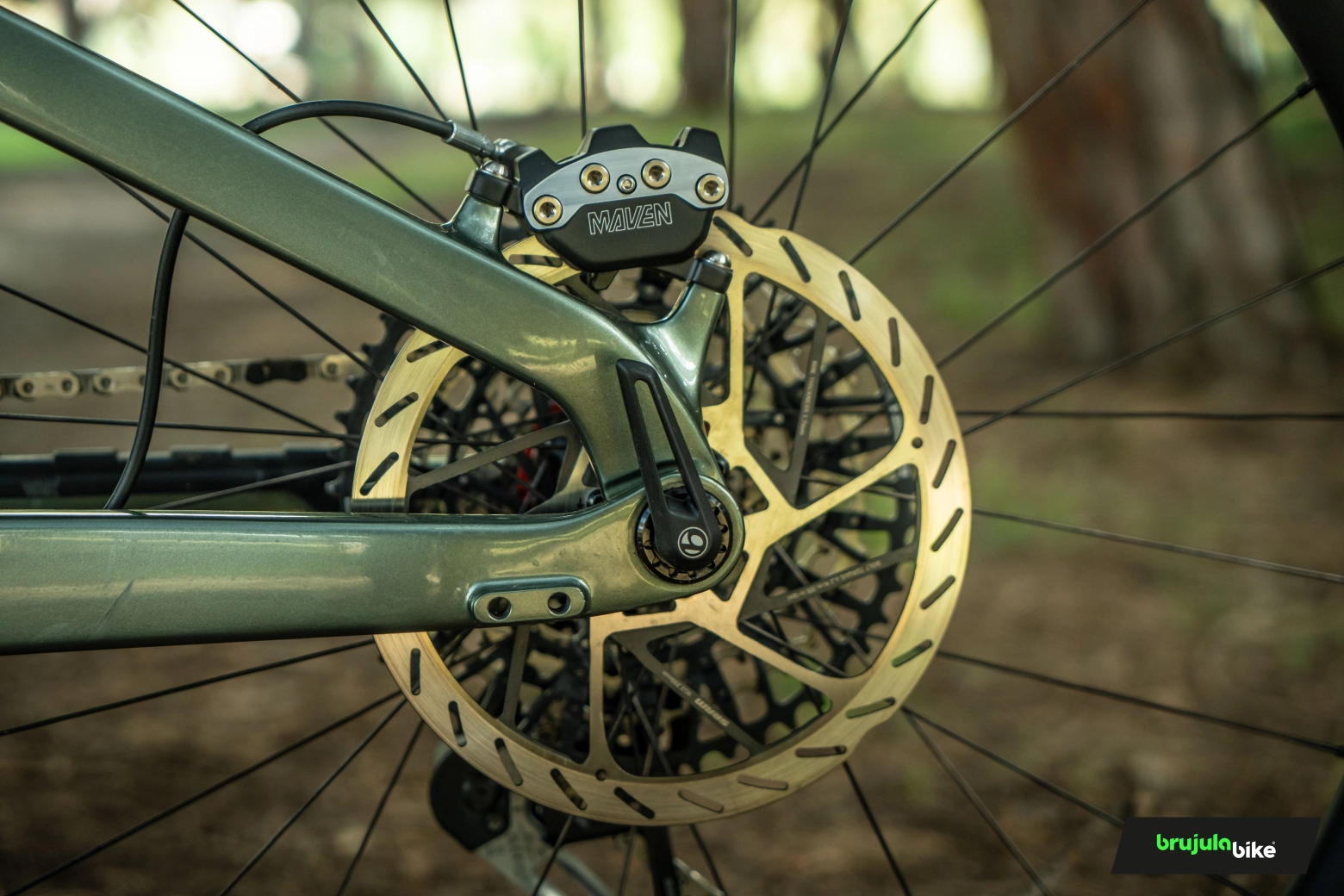
The brakes are simply brutal, to the point that you have to get used to them in order not to be scared by too much power. And their feel no longer reminds us at all of the inconsistent feel that Sram brakes suffered from years ago. The wheels also contribute to the agility and precision of this Trek Rail 9.9 and the tires have given us a lot of confidence at all times.
Conclusion
We've enjoyed the Trek Rail for quite a while now and it seems like one of those sure bets you can't go wrong with. It is a powerful eBike, with possibly the most desirable engine on the market, ideal suspension setup for enduro or aggressive trail, with a rear suspension system whose performance is more than proven, and a very current geometry and also widely configurable according to our preferences.
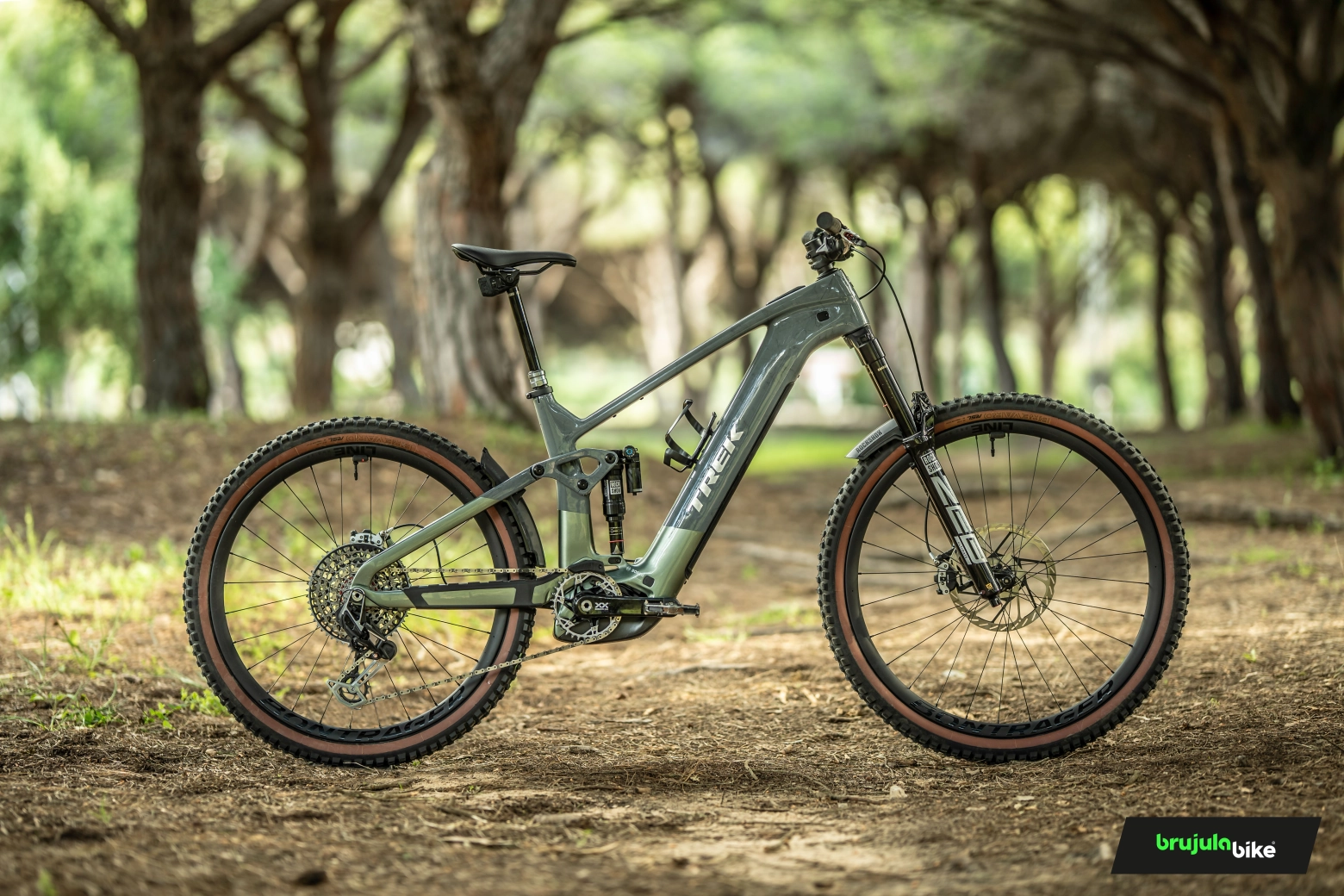
The Trek Rail is a bike with no weak points, and the top of the range version we tested has everything to become an object of desire for every eBike enthusiast, but of course there are more options in the range, as not so many lucky ones can afford the 12,999€ that the Rail 9.9 XX AXS T-Type costs.
In the new Rail Gen 5 range there are 7 models and the entry level Rail+ 5 model costs 5.499€.
Trek Rail+ 9.9 XX AXS T-Type: specifications, weight and price
- Frame: Rail carbon OCLV mountain, 160mm
- Fork: RockShox ZEB Ultimate, DebonAir, Charger 3.1 RC2, 160mm
- Shock: RockShox Super Deluxe Ultimate RC2T, 205x65mm
- Wheels: Bontrager Line Pro 30, carbono OCLV
- Front tire: Bontrager Brevard RSL SE, 60 tip, 29x2,5”
- Rear tire: Bontrager Brevard RSL SE, 60 tip, 27,5x2,5”
- Rear Derailleur: Sram XX Eagle AXS, T-Type
- Crankset: Sram XX Eagle, 165mm
- Cassette: Sram Eagle XS-1297, T-Type, 10-52
- Chain: Sram XX Eagle, T-Type
- Saddle: Verse Short Comp, steel rails, 145mm
- Seatpost: RockShox Reverb AXS, S 100mm, M, L, XL 170mm
- Handleber: Bontrager Line Pro, carbon OCLV, 35mm, 780mm
- Stem: Bontrager Line Pro, 35mm, lenght 45mm
- Brakes: Sram Maven Ultimate, discs 200 / 220mm
- Weight: 24.12kg
- Price: 12,999€